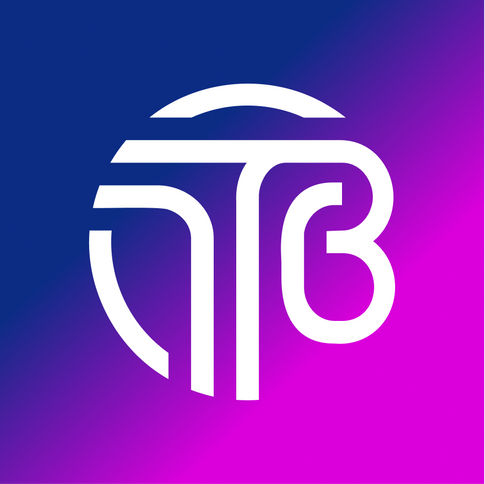CV Writing Guide
The importance of your resume can’t be underestimated. Every day, employers and recruiters scan through stacks of them, making snap decisions about people purely based on that single document. If you want to ensure yours isn’t dismissed, it has to grab their attention, and quickly.
Make your resume easy to read
Recruiters and HR professionals are sifting through resumes each and every day. Make it easy for them to read and scan.
Use a clean and simple layout, avoid boxes and columns
Choose a professional font like Arial, Calibri, or Times New Roman, typically sized between 10-12 points.
Use bullet points to break up text and make information easier to scan.
Use headings and subheadings (e.g., Work Experience, Education) to organise sections clearly.
Prioritise Information
Place the most important and relevant information at the top of each section.
Start with a summary, objective or personal statement that highlights your key qualifications, achievements, awards or recognitions.
This should not be more than 100 words at most, make it punchy, this will be the hook to make the reader want to read more!
Tailor your resume for each job application, emphasizing the experience and skills that are most relevant.
Keep It Concise
Avoid unnecessary details; focus on achievements and outcomes rather than job descriptions.
Promote the skills and experiences that are relevant to the specific job.
Use Clear Section Headings
Make your section headings bold or slightly larger than the rest of the text.
Ensure each section is distinct and easy to navigate.
Incorporate White Space
Don’t overcrowd the page. Use white space to separate sections and make the content more digestible.
Quantify Achievements
Where possible, use numbers to highlight your accomplishments (e.g., "Increased sales by 20%" or "Managed a team of 15").
Wording
Start bullet points with action verbs like "Led," "Developed," "Implemented," or "Managed" to convey your contributions effectively.
Avoid Jargon and Buzzwords.
Use clear, straightforward language. Avoid industry jargon unless it’s necessary and understood by the reader.
Use language that makes your point in the clearest possible way, complex language only increases the possibility of confusion
-
Digital Tools
The digital age has transformed the hiring process, and the way you craft your resume is no exception.
Include relevant keywords in your CV. These are the words that relate to your profession (i.e. ‘Marketing Assistant’).
Update and fine-tune your social media platforms – especially LinkedIn. Receiving a CV is often a green light for recruiters to find you online.
Do an online audit of yourself – just to ensure everything looks as professional and relevant as possible.
Proofread
Check for typos, grammatical errors, and inconsistencies in formatting. Consider having someone else review it.
Highlight Key Skills
Use this section to showcase your skills this will be a key factor when recruiters or HR professionals are reading your resume
Steps to address Selection Criteria
When applying for a job, addressing the selection criteria is often a crucial step. These criteria allow employers to assess how well you meet the essential qualifications, skills, and experiences required for the position. Here’s how to effectively write a response to selection criteria:
Understand the Criteria
Read the job description carefully. Break down each criterion to understand exactly what the employer is looking for. Highlight key action words and requirements.
Provide Clear and Specific Examples
Use examples from your past work or study experience to demonstrate how you meet each criterion. This helps to show not just that you possess the skills but also how you’ve applied them in real-life situations.
Use the STAR Method
Structure your response using the STAR method:
· Situation: Describe the context or background.
· Task: Explain your role in the situation.
· Action: Outline the actions you took to address the situation.
· Result: Describe the outcomes and how they benefited the company or project.
Be Concise but Comprehensive
Stick to the point while ensuring you cover each criterion fully. Don’t exaggerate or include irrelevant information.
Tailor Each Response
Tailor your examples to the job you are applying for. Make sure your responses align with the company's values and the specific requirements of the position.
Example of Addressing Selection Criteria
Criterion 1 : Strong Communication Skills
Example:
In my previous role as a Customer Service Representative at XYZ Company, I was responsible for handling customer enquiries and resolving issues efficiently. (Situation) I often communicated with customers via phone, email, and in-person to clarify issues and offer solutions. (Task) To improve my communication, I actively listened to customers' concerns, asked clarifying questions, and provided timely and clear responses. (Action) As a result, I consistently received positive feedback from clients, and the customer satisfaction rate increased by 15% during my tenure. (Result)
Criterion 2 : Ability to Work in a Team
Example:
In my role as a Project Coordinator at ABC company, I worked in a cross-functional team to launch a new product. (Situation) My responsibility was to ensure that all departments were aligned with the project deadlines and deliverables. (Task) I facilitated weekly team meetings, maintained open lines of communication, and created shared project timelines. (Action) This collaborative effort helped to launch the product on time, increasing the company’s quarterly sales by 20%. (Result)
Criterion 3 : Strong Problem-Solving Skills
Example:
During my time as a Sales Manager at DEF company, I noticed a steady decline in sales in a particular region. (Situation) After conducting a market analysis, I identified that the issue was related to poor customer engagement and an outdated sales strategy. (Task) I implemented a new customer relationship management (CRM) tool and retrained the sales team on updated engagement tactics. (Action) As a result, sales in the region grew by 25% over the following quarter. (Result)
Final Tips:
Proofread your responses to ensure clarity and professionalism.
Stay within word limits if specified.
Focus on demonstrating relevant skills that match the job description.


